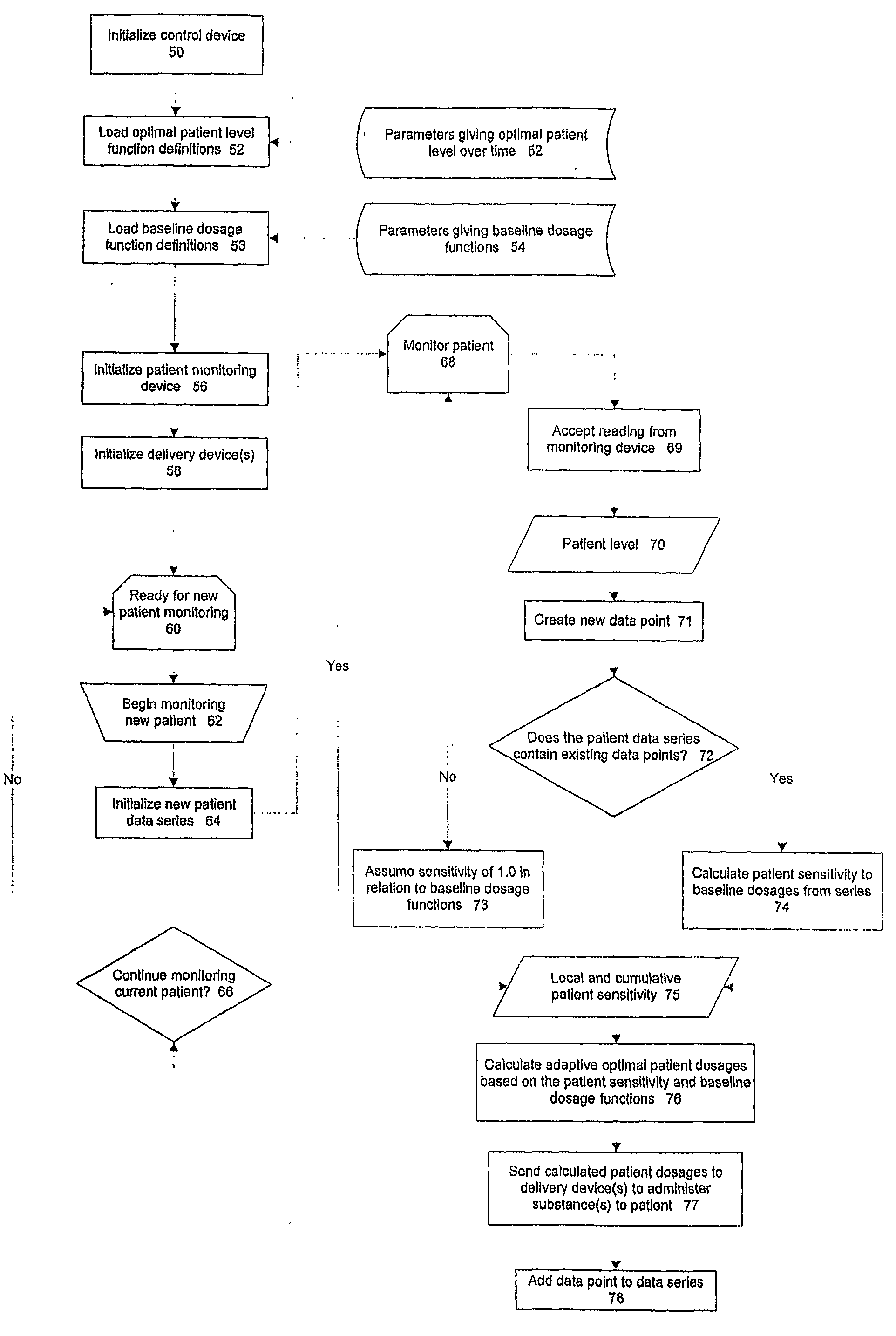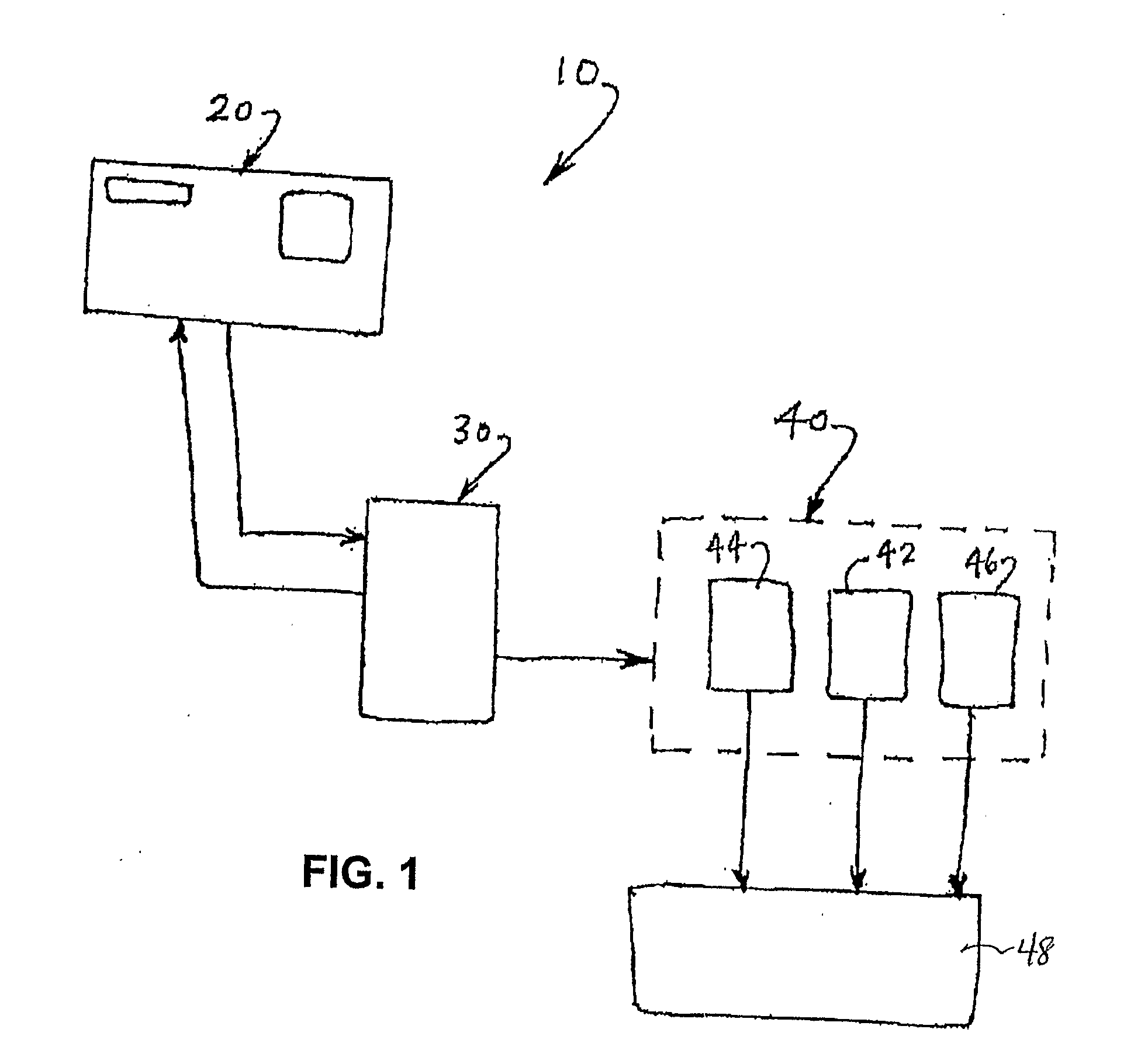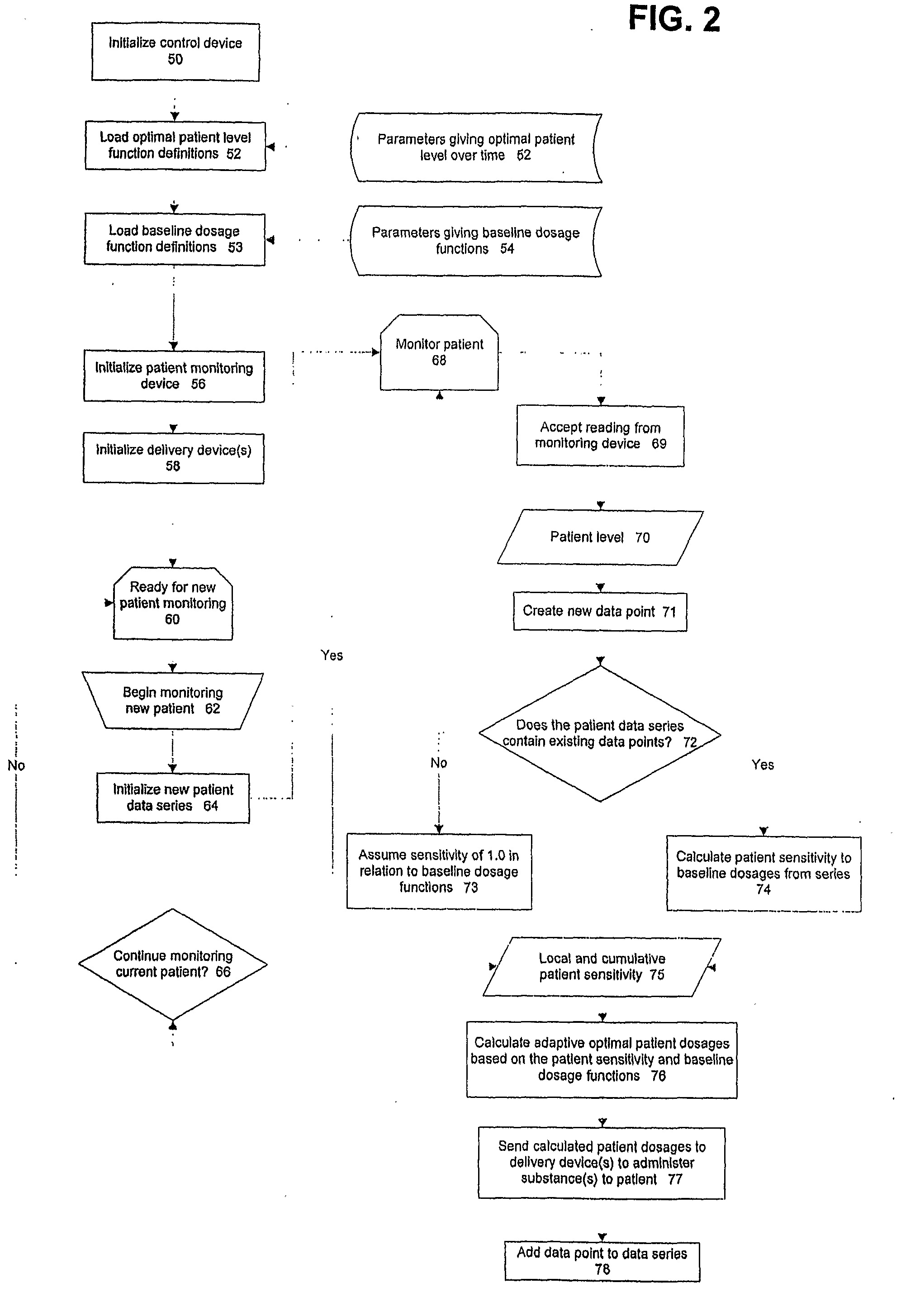Balanced Physiological Monitoring and Treatment System
a physiological monitoring and treatment system technology, applied in the field of balanced physiological monitoring and treatment system, can solve the problems of life-threatening errors, large time and resources of healthcare professionals, and the inability to monitor and control multiple physiological parameters for a plurality of patients
- Summary
- Abstract
- Description
- Claims
- Application Information
AI Technical Summary
Benefits of technology
Problems solved by technology
Method used
Image
Examples
Embodiment Construction
[0035]Referring to FIG. 1, a system for providing balanced, automated regulation of a physiological condition in a patient is generally indicated as 10. System 10 includes a physiological monitor 20, an intelligent electronic controller unit 30 and a multi-channel delivery mechanism 40 which may include multiple single channel delivery manifolds, one or more multiple channel delivery manifolds, or a combination of single and multiple channel delivery manifolds.
[0036]In one embodiment, the multi-channel delivery mechanism 40 includes two pumps, a first pump 42 and a second pump 44 for delivering medications to a patient. In an alternate embodiment, system 10 includes a third pump 46 for delivery of a third medication to a patient 48. In another alternate embodiment, system 10 includes four or more pumps for delivery of four or more medications to a patient. In the foregoing embodiments, the use of two, three, four or more pumps 46 allows for the concurrent monitoring and control of s...
PUM
 Login to View More
Login to View More Abstract
Description
Claims
Application Information
 Login to View More
Login to View More - R&D
- Intellectual Property
- Life Sciences
- Materials
- Tech Scout
- Unparalleled Data Quality
- Higher Quality Content
- 60% Fewer Hallucinations
Browse by: Latest US Patents, China's latest patents, Technical Efficacy Thesaurus, Application Domain, Technology Topic, Popular Technical Reports.
© 2025 PatSnap. All rights reserved.Legal|Privacy policy|Modern Slavery Act Transparency Statement|Sitemap|About US| Contact US: help@patsnap.com



